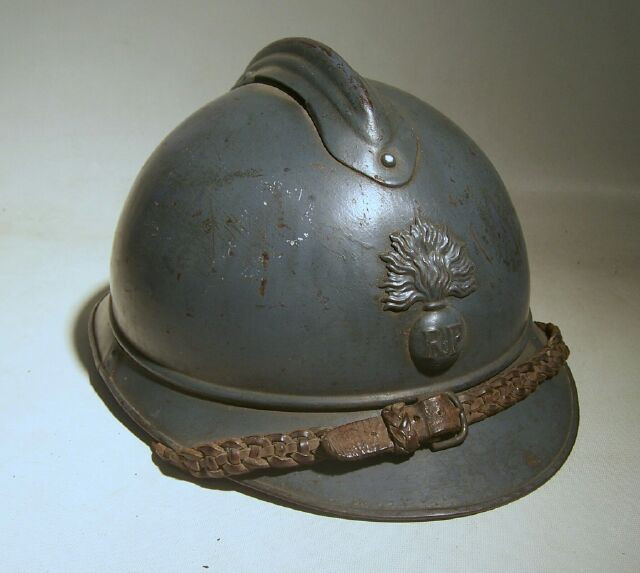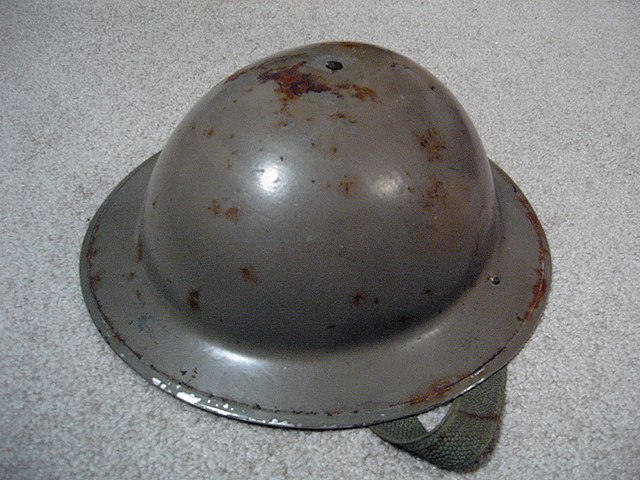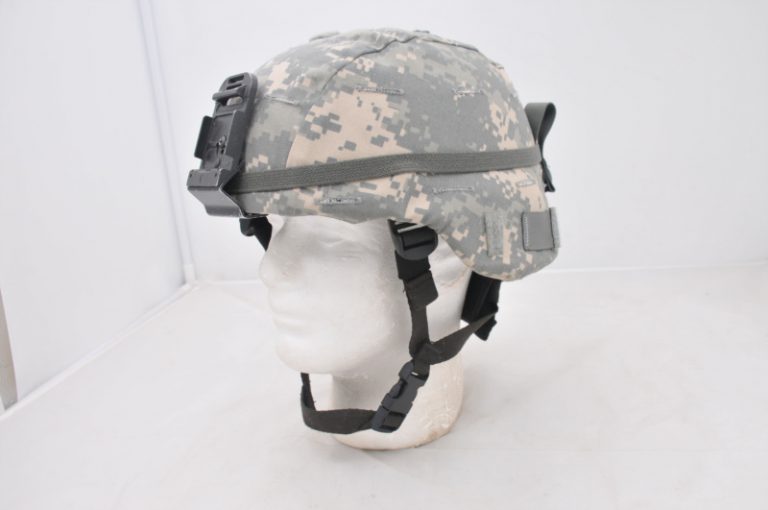Views: 0 Author: Site Editor Publish Time: 2025-06-23 Origin: Site
In the ever-changing landscape of the modern battlefield, the safety of soldiers is paramount. Among critical gear, the ballistic helmet plays an indispensable role. From the steel helmets of World War I to today's high-tech composite headgear, the evolution of ballistic helmets isn't just a reflection of advancements in material science and military technology; it's a history of continuous innovation dedicated to protecting the lives of warriors.
In the early days of World War I, the widespread use of artillery and machine guns led to devastating head injuries from shrapnel and stray bullets. At that time, most armies lacked effective head protection. In 1915, the French army pioneered the introduction of the Adrian Helmet, made from manganese steel, marking the formal return of military helmets. This helmet featured a distinctive crest on top designed to deflect falling objects and included a liner system for improved comfort.

Soon after, the British Brodie Helmet was introduced. Its unique "soup bowl" shape aimed to better protect the wearer's shoulders and neck, while also being suitable for mass production. Germany, meanwhile, developed the classic M1916 Stahlhelm, whose iconic "horns" not only enhanced its recognizable profile but also offered extra ear protection and provided ventilation holes. While these early steel helmets were heavy, they effectively protected against low-velocity shrapnel and stray projectiles, significantly reducing head casualties. Though diverse in design, they established the basic form of the modern helmet: a metal shell enclosing the head, offering a certain area of protection.


World War II further propelled helmet technology forward. While maintaining basic protective performance, nations began to pursue lighter, more ergonomically designed helmets, focusing on production efficiency to meet the demands of large-scale warfare. The American M1 Helmet epitomized this era. Its iconic two-piece design, with an outer ballistic steel shell and a separate inner fiberglass liner that could be worn independently, facilitated both production and battlefield maintenance. The widespread adoption of the M1 helmet made it one of the most recognizable military helmets of WWII and provided significant inspiration for later helmet designs.
During WWII, various steel compositions and heat treatment processes were explored to enhance the helmet's ballistic performance without increasing weight. Concurrently, helmet liner systems were improved, using materials like leather, fabric, and cork to boost comfort and stability, reducing fatigue during prolonged wear.

During the Cold War, as the chemical industry advanced, new materials began to enter the military sector. Traditional steel helmets proved inadequate against high-velocity projectiles and certain new types of bullets. This led to the emergence of a revolutionary material: Kevlar.
Kevlar is a high-performance synthetic fiber known for its exceptional strength and toughness, while being significantly lighter than steel. Its unique molecular structure makes it highly effective at absorbing impact energy. In the late 1970s and early 1980s, the U.S. military spearheaded the introduction of the PASGT helmet (Personnel Armor System for Ground Troops), made from Kevlar. The PASGT helmet fundamentally changed helmet manufacturing and protective capabilities. It not only effectively resisted shrapnel and handgun rounds but also significantly reduced the soldier's load (by approximately 25-40% compared to steel helmets), enhancing wearing comfort. The classic "UFO" shape of the PASGT helmet became an iconic symbol of the late Cold War and modern military use, adopted and imitated by numerous countries worldwide. If you're looking for a classic and reliable protective helmet, our PASGT helmet series is an ideal choice.
Entering the 21st century, with the increasing complexity and high-tech nature of modern warfare, the design philosophy of ballistic helmets has undergone a transformative change.
Further Advances in Composite Materials: Beyond Kevlar, new fibers like Ultra-High Molecular Weight Polyethylene (UHMWPE) are now widely used in helmet manufacturing. These materials, through multi-layered cross-weaving and resin solidification techniques, further enhance ballistic performance, while achieving lighter weight and stronger blunt trauma resistance. This led to the development of more advanced helmets like the ACH (Advanced Combat Helmet) and ECH (Enhanced Combat Helmet). The ACH helmet improved upon the PASGT by removing the redundant brim over the forehead, providing better visibility and accessory mounting options; the ECH further optimized materials and structure to offer higher levels of protection, effectively resisting higher-energy rifle threats.


Emergence of Specialized Helmets: To meet the demands of different combat environments and special forces, various specialized tactical helmets have emerged. For instance, the FAST (Future Assault Shell Technology) helmet is highly favored by special forces due to its high-cut design. This design raises the sides of the helmet, providing ample space for wearing hearing protection, communication headsets, and tactical eyewear, significantly enhancing situational awareness and communication capabilities. For users seeking ultimate tactical performance and accessory compatibility, our FAST helmet is an unparalleled choice.
Furthermore, the MICH (Modular Integrated Communications Helmet) helmet strikes a balance between protective performance and modular accessory integration, commonly used by special operations and law enforcement agencies. If you need a versatile protective helmet, our MICH helmet will meet your requirements.
In recent years, the WENDY helmet, exemplified, has gained widespread attention for its innovative suspension systems and lightweight design. WENDY helmets prioritize wearer comfort and stability, with unique foam liners and the dial adjustment system providing superior fit and ventilation. If you demand high levels of comfort, lightweight design, and premium configurations in your helmet, our WENDY helmet series will offer an exceptional experience.
Modular Design: Modern helmets are no longer just simple protective shells; they are highly modular platforms. They commonly feature standard NVG (Night Vision Goggle) mounts, ARC (Accessory Rail Connector) rail systems, and Velcro areas, allowing for easy integration of night vision devices, communication equipment, tactical lights, goggles, and other accessories. Our range of tactical helmets comes equipped with these multi-functional rails and Velcro, enabling you to customize and quickly attach/detach gear according to your mission needs.
Ergonomics and Comfort: Comfort is an increasingly crucial consideration in modern helmet design. Advanced suspension systems and breathable liners, such as memory foam pads and moisture-wicking materials, ensure soldiers remain comfortable during extended wear, reducing pressure points and heat buildup. We offer ergonomically designed comfortable helmet liner systems and adjustable suspension systems to ensure optimal fit and stability.
The performance evaluation of ballistic gear relies on authoritative standardized testing. For example, the U.S. National Institute of Justice (NIJ) standard Ballistic Resistance of Body Armor defines minimum performance requirements and testing methods for helmets and body armor intended for law-enforcement use, covering threat levels from handguns to rifles. When selecting helmets or accessory protective pieces, priority should be given to those tested and certified by relevant institutions or independent labs.
Mission type: For standard patrols or lower-risk tasks, prioritize lightweight, comfortable ACH/MICH-style helmets; for high-risk entries and special-operations tasks choose high-cut FAST/tactical-style helmets with communication system integration.
Protection level vs. weight balance: Higher protection often means heavier weight—users must weigh protection level against mobility. Modern UHMWPE and composite materials can reduce this trade-off.
Accessory compatibility: If a mission depends on night vision, communications, or video capture, ensure the helmet offers mounting NVG interfaces and rails.
Proper wear: Ensure the chin strap is appropriately tightened and the liner fits the head shape to avoid excessive movement, which can reduce protective capability.
Regular inspection: Check the shell for cracks, liner wear, buckle corrosion, and attachment integrity. Helmets hit by impact or struck by shrapnel should be immediately retired and sent for inspection.
Cleaning & storage: Avoid harsh solvents for cleaning—use manufacturer-specified neutral cleaners; store in a dry, cool place to prevent UV or moisture degradation of materials.
Future helmets will evolve toward “smart” and “system‐integrated” platforms: helmets integrating AR heads-up displays, biometric sensors, situational awareness networks, and power-management systems are in development and being further tested. At the same time, advances in composite and nanomaterials will continue to drive breakthroughs in weight reduction and higher energy-absorption capabilities.
From the battlefields of World War I to modern counter-terrorism operations, the evolution of ballistic helmets is a testament to the dedication to protecting soldiers' lives and the continuous breakthroughs in technology. It's more than just a piece of equipment; it's a guardian of life on the battlefield.
In our tactical gear business, we understand the critical importance of quality and reliability in ballistic equipment. We are committed to providing a range of ballistic helmets that meet international standards, from classic military replicas to the latest high-performance tactical helmets, catering to your protection needs in various environments. Whether you require the dependable protection of a PASGT helmet, seek the ultimate tactical performance of a FAST helmet, prefer the versatility and modularity of a MICH helmet, or favor the exceptional comfort and lightweight design of a WENDY helmet, we have the perfect solution for you. We also offer a wide array of helmet accessories, including rail systems, NVG mounts, tactical helmet covers, helmet communication systems, and helmet lights, enhancing your helmet's functionality and fulfilling your customization and high-performance requirements.
Your safety is our utmost concern. If you have any questions about our ballistic helmets or other tactical gear, or wish to learn more about our products, please don't hesitate to contact us. Our team of experts is ready to provide you with professional consultation and help you choose the most suitable protective gear.
Click Here to Submit Your Inquiry Now!
Ensure your safety by starting with high-quality protective equipment.